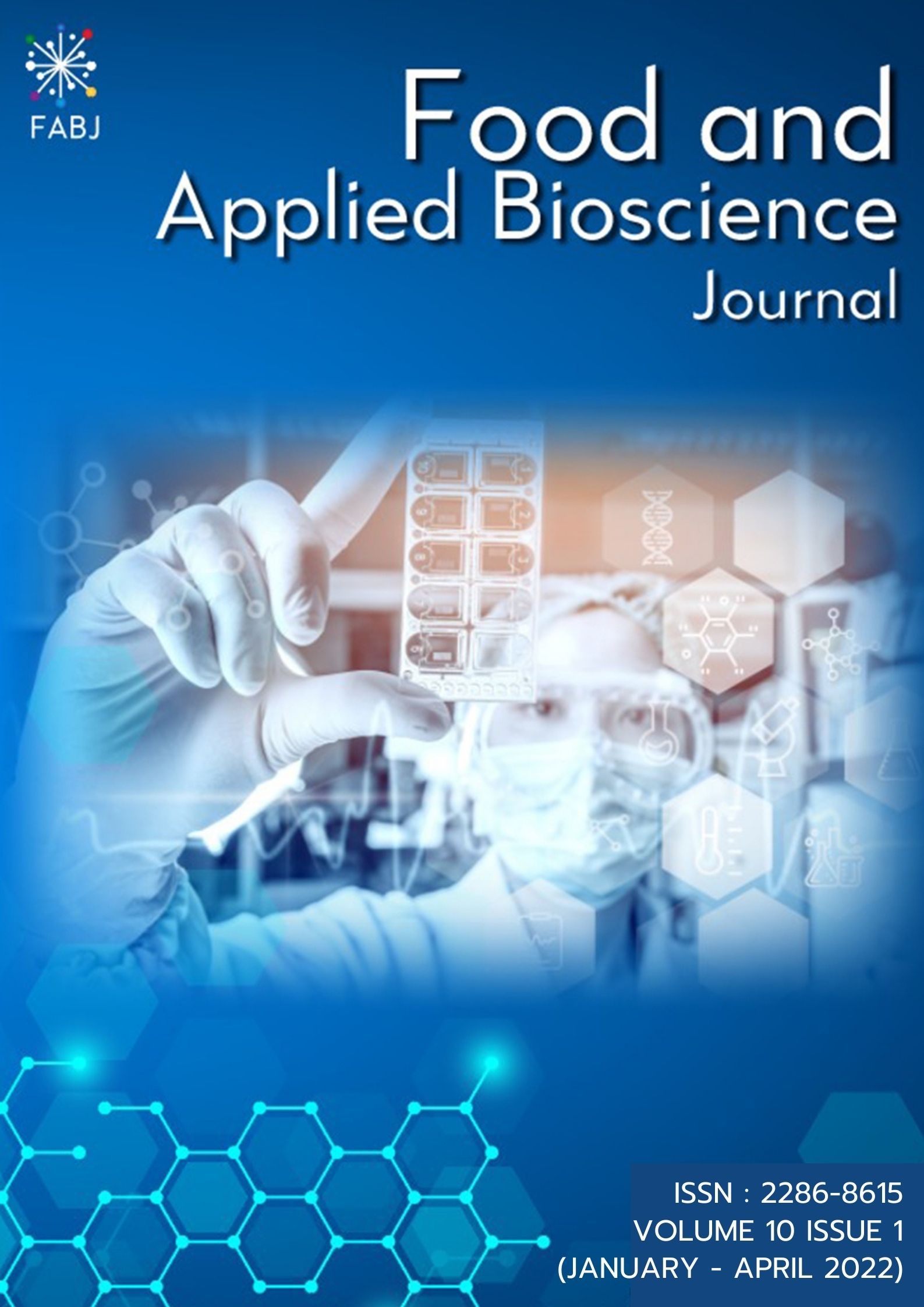CFD Simulation of Heat Conduction in Curry Paste during Sterilization
Keywords:
CFD, Simulation, Sterilization, Slowest heating zone, Curry pasteAbstract
Curry paste is a popular food product in Thailand, made of many fresh and dry spices that are finely ground to a solid-like homogeneous blend. The four types of curry paste KangSom (KS), GreenCurry (GC), PadPed (PP) and MasMan (MM) were used as 100 g samples in glass bottles. A water-spray with pressure-balance retort was run at 116°C to thermally sterilize by eliminating pathogenic microorganisms, and to extend the shelf-life of curry paste. Time profile of temperature at the slowest heating zone (SHZ) during thermal treatment is important for estimating the sterilization value (F0). A high quality mesh discretization was use in numerical simulations. This study used CFD simulations of heat conduction in curry paste during sterilization to get the SHZ(sim), which was compared with the experimental SHZ(exp). Thermal diffusivity (α) of each curry paste was adjusted for best fit of SHZ(sim) with SHZ(exp) according to the coefficient of determination R2. The results were for KS (α=1.55x10-7 m2/s, R2=0.9990), GC (α=1.55x10-7 m2/s, R2=0.9989), PP (α=1.65x10-7 m2/s, R2=0.9996) and MM (α=1.45x10-7 m2/s, R2=0.9993). The sterilization values F0(sim) from simulation and F0(exp) from experiments were approximately equal, and so were the processing times required. In summary, CFD simulation of heat conduction can be used to describe the heat transfer in an actual food product that is solid-like and homogeneous. This study can be used as a template for guiding thermal process design by numerical simulations.
References
TCPS 129-2556. 2013. Thai Community Product Standard. Namphrik Kaeng. Bangkok.
TIS 429-2548. 2005. Thai Industrial Standard. Curry Paste and Seasoning Paste. Bangkok.
Lewis, M. J. 2006. Thermal Processing. In Brennan, J. G. (Eds). Food Processing Handbook (pp. 53). Wiley-Vch, Weinheim, Germany.
MOPH 420-2563. 2020. Notification of the Ministry of Public Health. Food Production Processes, Processing Equipment/Utensils and Storage Practices. Bangkok.
The OpenFOAM Foundation. 2017. OpenFOAM v7 User Guide. URL. (https://cfd.direct/openfoam/user-guide-v7/) (30 April 2022)
Versteeg, H. K. and Malalasekera, W. 2007. An introduction to computational fluid dynamics: The finite volume method (pp. 9-39). Pearson Prentice Hall, England.
Berk, Z. 2009. Food Process Engineering and Technology (pp. 69-81). Academic Press, New York.
National Technology & Engineering Solution of Sandia. (2022) Introduction to ParaView. URL (https://docs.paraview.org/en/latest/UsersGuide/introduction.html) (30 April 2022)
Betta, G., Rinaldi, M., Barbanti, D. and Massini, R. 2009. A quick method for thermal diffusivity estimation: Application to several foods. Journal of Food Engineering. (91): 34-41.
Reddy, R. S., Arepally, D. and Datta, A. K. 2020a. Estimation of heat flux in bread baking by inverse problem. Journal of Food Engineering. 109774(271): 1-10.
Reddy, R. S., Arepally, D. and Datta, A. K. 2020b. Inverse problems in food engineering: A review. Journal of Food Engineering. 110909(319): 1-27.
Huang, L. and Liu, L.S. 2009. Simultaneous determination of thermal conductivity and thermal diffusivity of food and agricultural materials using a transient plane-source method. Journal of Food Engineering. (95): 179-185.
Downloads
Published
How to Cite
Issue
Section
License
Copyright (c) 2022 Food and Applied Bioscience Journal

This work is licensed under a Creative Commons Attribution-NonCommercial-NoDerivatives 4.0 International License.






